Japanese cats: characteristics, choice and rules of care
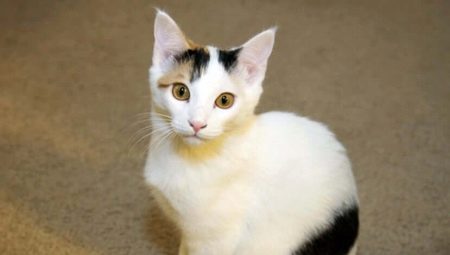
Japan is an amazing country with its own traditions and nuances of culture. The national flavor in it leaves an imprint on everything that is possible, including the species diversity of bred cat breeds. Due to the originality of the approach, the selection is carried out purposefully. The material in this article will tell the reader what makes Japanese cats unique, how to choose such a pet for yourself, and what are the main nuances of caring for it.
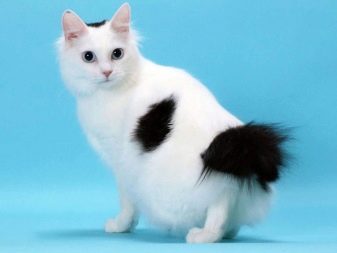
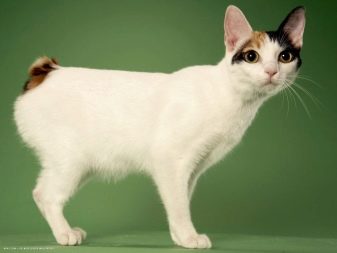
Description
The Japanese cat is especially respected by its breeder, which it owes to the traditions of its country. As a rule, individuals do not have a long tail, which is considered the focus of devilish power. The short tail, according to popular opinion, has long been recognized as belonging to a unique species. The breeds of such cats are notable for the fact that the tail is not cut off: kittens are born without it. The selection was based on a cat named "Japanese Bobtail".
Such a cat is different from other representatives of the feline family. harmony of body size and proportions. One of the distinguishing features of this animal is the characteristic "samurai stance". The head of the cat tends to the shape of an equilateral triangle, the muzzle is quite graceful, the eyes are large and expressive.
The position of the big ears in the Japanese cat is vertical, due to which the animal seems alert.
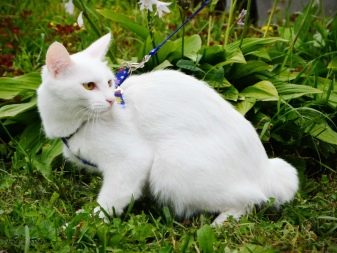
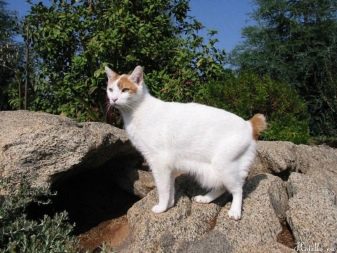
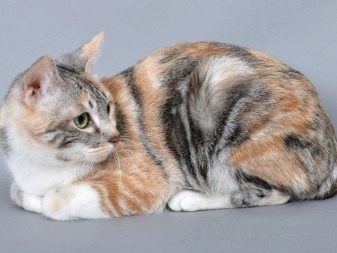
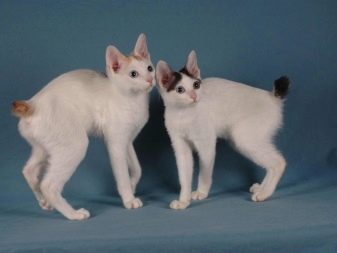
In fact, this is a cat breed bred in Japan, which differs from other varieties in the presence of two or more shades of color. Its coat is single-layer: the lack of an undercoat is due to the fact that the origin of the species originated in a mild climate.As for the absence of a tail, the breed is considered conditionally tailless: in some representatives its length can vary from 2 to 7 cm. Due to the greater density and length of the coat, it resembles a pompom.
Japanese cats with big eyes have their own requirements for the exterior, they must:
- be sure to have a short tail bud;
- inherit the genotype of the Japanese bobtail;
- be in direct kinship with him;
- be in good health;
- have a color scheme of two or more colors with a predominance of white.
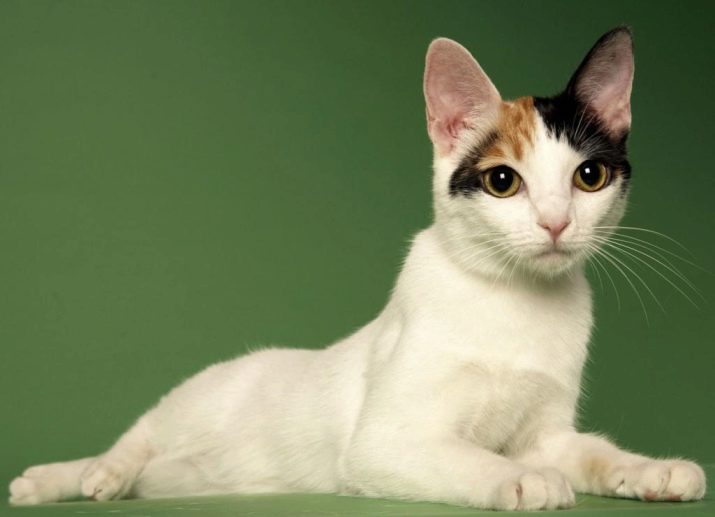
A Japanese cat weighs no more than 4 kg, its body is muscular, its front legs are shorter than the hind legs. Because of this physiological feature, she cannot walk smoothly: her movements are more like jumps. Purebred Japanese cats do not have different eye colors: such individuals are considered representatives of American selection.
A variation of the Japanese Bobtail is the long-haired bobtail, bred by breeders about 20 years after the CFA's recognition of the breed. It is noteworthy that the long-haired representative of the tailless breed had other names ("chrysanthemum cat", "bobby"). However, in breeder circles, the individual has remained a long-haired bobtail.
A distinctive feature of short-haired cats is the flattened shape of the muzzle. The distance between the ears is narrower, the muzzle does not have a depression at the transition from the nose to the forehead. Long-haired brethren have a small woolen collar, and they usually shed within 5-6 days. Other representatives of the breed have a "mi-key" color, which combines three colors: white, black and red.
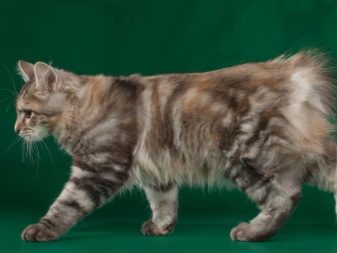
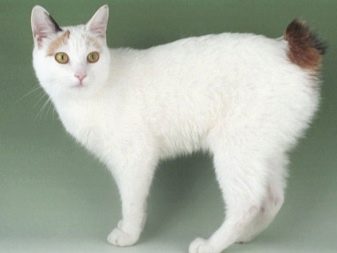
Character traits
Despite the fact that tailless cats are considered accommodating creatures, their character can be different. Some of them are affectionate and docile, others are unbearable. They can become attached to the owner, rarely when they sit around and constantly find a reason for entertainment. At the same time, an active animal will never refuse to play with its owner. They are partial to flying insects and rustling candy wrappers.
Due to their activity, they cannot sit idle, and therefore with the owners leading a sedentary lifestyle, they will be bored... Bobbles cannot live without movement and active games, they are extremely curious and amenable to training. If desired, they can be taught to some commands, and individual individuals after training can bring the necessary items. Others carry their toys in their teeth for a long time and love to play with the owner in tug of objects.
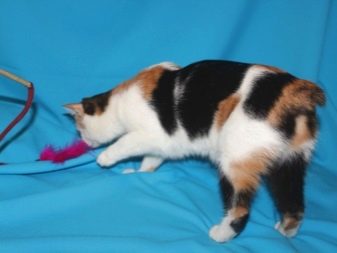
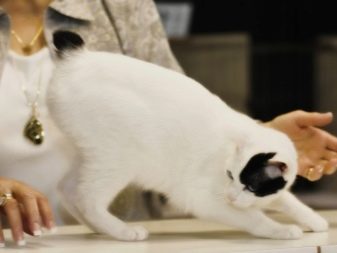
Usually, they maintain a neighborhood with representatives of their genus, they will always find a reason for games and other feline entertainments. Unlike many other breeds, they are not afraid of water, willingly splash around in the bathroom and can swim. Breeders claim that these cats stand out more than others in one trusted family member, trying to show him their affection by affection. Outdoor walks are a favorite activity of Japanese cats. They do not feel fear when meeting strangers or animals, they have a pleasant purring voice.
The Bobtail is by nature a hunter. This cat is partial to small rodents and poultry. Sooner or later, no matter how friendly he is, he will turn his hunting attention to them.
It is not recommended to plant it where there are birds.
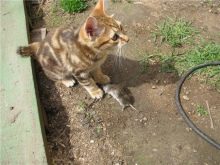
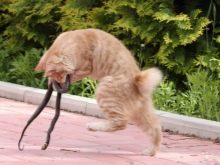
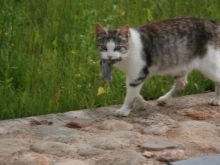
How to choose?
It is quite difficult to acquire a Japanese cat, the reason for which is the search for a proven cattery where purebred kittens are raised. Any breed representative must have documentation. As for nurseries in our country, unfortunately, we have only one, located in Zavidovo (Moscow region).
You need to choose a kitten approximately when he is 3-4 months old. At this time, the representative of the breed is already quite active and curious, he can quickly adapt to new living conditions. The kitten's body is thin, but it is not weak, the back should have an even bend.The ears should stand, the eyes of an individual can be not only large, but also set at an angle. Their color will depend on the color of the coat, and therefore may be different.
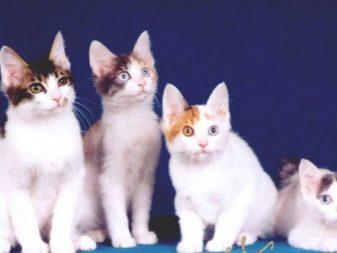
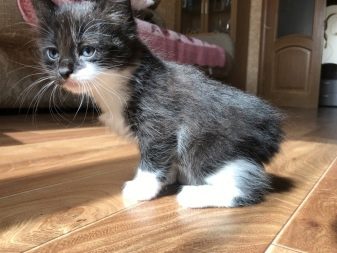
An active kitten is persistent and self-confident. This is a researcher who is drawn to everything new. Unlike other breeds, the Bobtail is considered to be talkative, friendly and playful. You need to take the most mobile cat, looking closely at his behavior. As for the color, the most popular is the tortoise-white color. However, if there are no such kittens in the cattery, you will have to be content with those that are.
A three-month-old kitten costs an average of 30,000 to 70,000 rubles. In this case, the price may vary depending on the gender, nature of the kitten, color and pedigree class. For example, the most expensive representative of the breed will be a female tortoiseshell kitten. In addition, kittens with blue eyes are valued higher.
As for the ponytail ponytail, ideally it should be slightly curled. Under no circumstances should it be straightened.
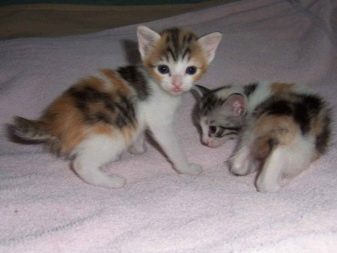
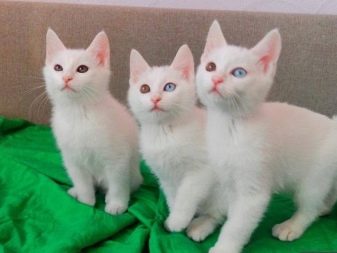
In general, such animals are not purchased from the breeder's hands, since there is a high risk of buying a non-purebred pet. There are cases when they were ordered directly from Japan, where there is a richer selection. When buying, it is important to keep track of whether for the kitten to be the heir to the Japanese bobtail... No other Bobtail (American, Kuril) can replace it, this is already a non-purebred breed, no matter who says anything.

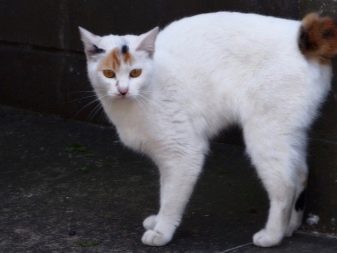
Content
It is generally accepted that Japanese short-tailed cats are unpretentious in their care and quickly get used to living conditions, regardless of whether it is an apartment or a private house. Their immunity is strong, they rarely get sick. Their average life expectancy is 15 years. During this time, the animal must be brought to the veterinarian in a timely manner.
It is necessary to carry out vaccination and deworming on time. Although these cats are not prone to hereditary diseases, they can attract fleas and ticks. Therefore, every time after a walk, you need to examine your pet for the presence of parasites. To walk a cat, you need to get a leash.
Frequent walks are especially important when the pet lives in a cramped apartment.
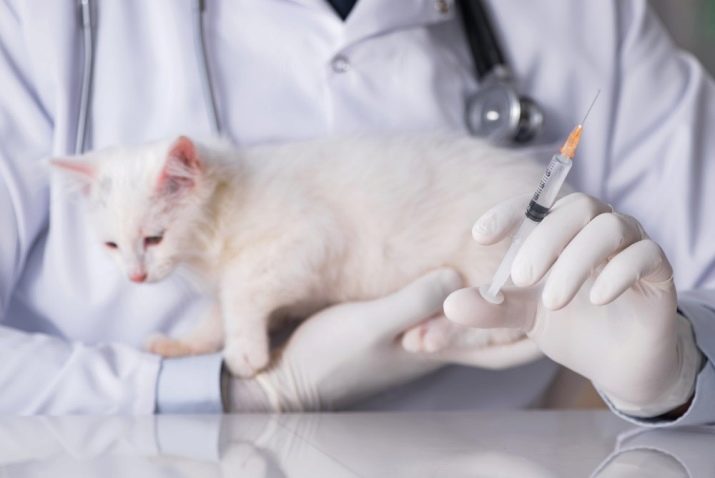
Bobtails are extremely sensitive to changes in temperature, and therefore can freeze if the house is cold. The reason for this is the lack of undercoat. As for their attitude to changing their place of residence, in this regard, they are picky. These cats travel well with the owner and do not suffer from frequent moving from place to place.
With a Japanese cat you need to constantly engage in training, which will allow you to develop not only friendly relationships, but also to raise a fairly intelligent animal with a sociable character. These animals seem to many breeders to be as faithful as dogs. With proper upbringing, they do not allow themselves any aggression, they never offend children, preferring to retire if they are offended.
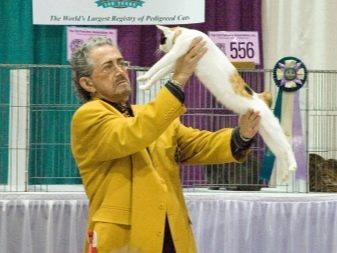

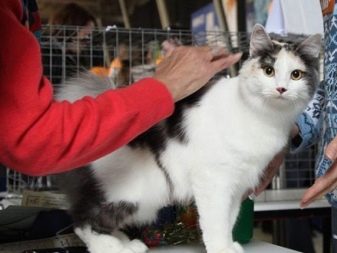
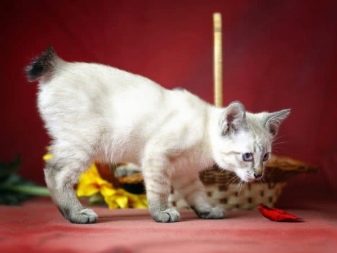
Nutrition
You need to feed a Japanese cat correctly. To do this, you can contact a specialist who will help you create a balanced, nutritious diet. The breeder must understand that commercial feed alone will not be able to replenish the animal with the necessary nutrients for muscle development and vitality. It is necessary that in addition to dry and wet food, the cat also receives natural products for food.
For example, he must constantly eat sea fish, veal, chicken meat, as well as offal... In addition to vitamin and mineral complexes, he will need fresh milk, cottage cheese and water. As for the choice of industrial feed, you need to buy it taking into account the age category of the animal. Cats usually do not pounce on food, but if it is noticed that the animal approaches the bowl of food too often, it is worth monitoring the amount of food it receives.
Overfeeding is fraught with loss of activity and, as a result, decreased immunity.... It is worth considering that some representatives of the breed are quite picky about food, and therefore will not eat what they do not like.
On average, a portion of food per day is calculated from the ratio of 30-60 g per 1 kg of body weight.
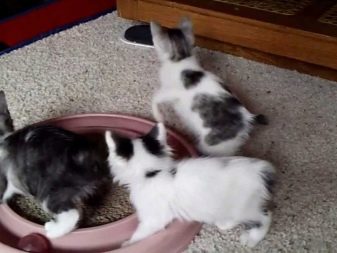

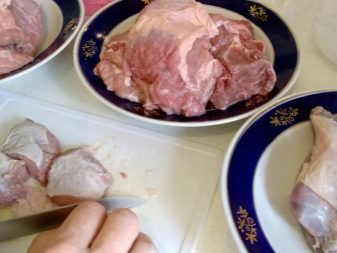
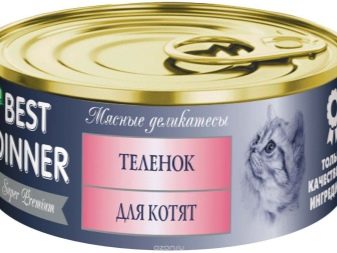
Products must be chopped before serving. As for the number of meals, you can feed the cat twice a day (in the morning and evening). It is advisable to do this at the same time, removing the bowl after the bobtail has eaten. It is important to pay attention to the fact that the nutritious diet includes vegetables, some fruits and even dairy products. He also needs lean meat, as well as boiled fish without bones.
Less often, you can give the animal boiled chicken yolks. Milk is good for young kittens, but adults may not tolerate it well, sometimes with digestive problems. Do not forget to feed the bobtail and weed from the pet store.
The food to be served should not be too hot. It is strictly forbidden to treat your pet with food from your table, for example, fried sausage, bacon or exotic delicacies. Such feeding can lead to serious health problems.
However, no matter how strange it may sound, you can offer the cat cucumbers, zucchini and even apples. To the surprise of many, there are cases when cats eat this kind of food.
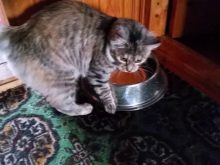

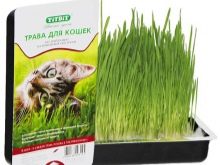
Hygiene
Regardless of the type of cats, they need to comb their hair. If this is a representative of the main breed, then the regularity of the procedures is no more than once a week. Individuals with long hair will be happy if they pay attention to combing their hair twice a week. In addition, the fold can be increased during the molt period.
Hygiene of the ears and eyes is carried out as soon as it becomes dirty. Their ears get dirty faster than their counterparts of other breeds. Due to their specific structure, they have to be cleaned more often, otherwise this can lead to consequences such as inflammatory processes. As for the claws, you can't do without a scratching post. In addition, it will be necessary to carry out preventive examinations in a timely manner, because long claws will bend and cause trouble for the pet, because of which the animal will be limited in movement.
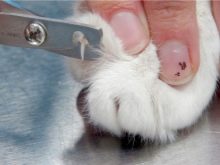
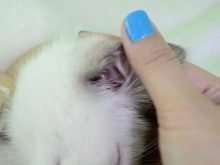
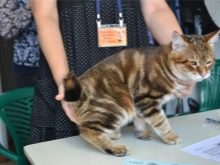
In general, bobtails are fairly clean and constantly clean themselves of any dirt, including dust. When processing wool, do not use chemical preparations: you can moisten cotton pads in chamomile broth or ordinary warm water. You don't need to bathe your pet all the time: it is enough to do this every few months.
The first sign that a cat has worms is a eyesore. If the corners of the eyes seem to be covered with something white, you urgently need to take the animal to the veterinarian, who will select the dosage of the drug for him based on the weight of the bobtail. Depending on the recommendations of a specialist, the treatment can be repeated.
With regard to combing wool, some pets are very fond of such procedures.
For example, they show attention and interest when they begin to comb, purr, try to turn the desired side. Others even gratefully lick the hands of the owner, who takes care of their health.
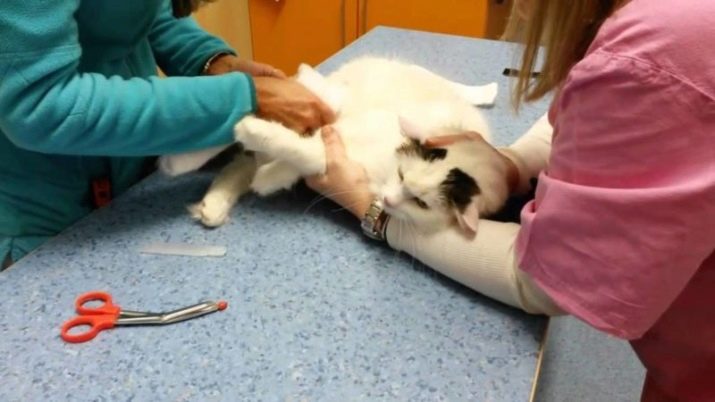
Reproduction
In our country, the breeding process of Japanese purebred cats is problematic due to the fact that it is not easy to find an individual of the opposite sex for mating. No matter how much you want to get offspring, mixing the breed with non-purebred cats leads to the birth of kittens with long tails.
The fact that the cat is ready for mating, she communicates with her behavior. As a rule, individuals during this period begin to quarrel with all household members. They are uncharacteristic of heart-rending screams, as is the case with ordinary felines. Mother cats are usually very caring, they can bring no more than 3-4 kittens in one litter. However, you can not be afraid that the kittens will not survive: the likelihood of their death is too low.
To get a litter, you must also ask who has an individual of the opposite sex when buying a kitten. Perhaps this will be the solution to the problem.
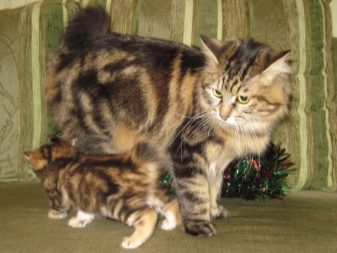
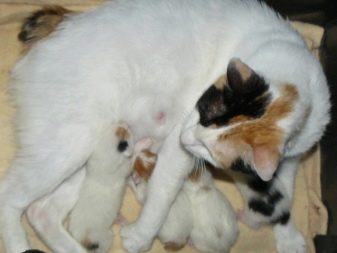
All about the features of this breed, see below.
































